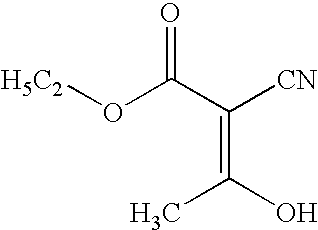Thermally developable imaging materials with barrier layer
a technology of thermal development and imaging materials, applied in the field of thermal development and photothermographic imaging materials, can solve the problems of increasing the formation of various types of fog or other undesirable sensitometric side effects, affecting the quality of conventional photographic materials, and consuming a lot of effort in the preparation and manufacture of photothermographic materials, so as to inhibit the effect of diffusion and reduce the buildup of debris
- Summary
- Abstract
- Description
- Claims
- Application Information
AI Technical Summary
Benefits of technology
Problems solved by technology
Method used
Image
Examples
example 14
[0301]The following example demonstrates that metal hydroxides and metal esters within the present invention can be incorporated in topcoat barrier layers of thermographic materials.
[0302]A 20 cm×1 cm strip of unexposed photothermographic material prepared as described in Example 5 above, was heated on a Reichert Heizbank heating block system (Kofler Reichert, Austria) with a temperature gradient from 68° C. to 212° C. for 15 seconds. Heating was carried out under IR safelight conditions. The density of imaged strips was measured on a MacBeth Model TR 924 Densitometer equipped with a visible filter. An optical density greater than 3.7 was obtained at a temperature of 165° C., while the optical density remained below 0.23 at temperatures below 110° C. This demonstration of the use of an unexposed photothermographic material is comparable to the use of a non-photosensitive thermographic material.
[0303]Thus, thermographic materials incorporating metal hydroxides and metal esters within...
PUM
| Property | Measurement | Unit |
|---|---|---|
| particle size | aaaaa | aaaaa |
| particle size | aaaaa | aaaaa |
| thickness | aaaaa | aaaaa |
Abstract
Description
Claims
Application Information
 Login to View More
Login to View More - R&D
- Intellectual Property
- Life Sciences
- Materials
- Tech Scout
- Unparalleled Data Quality
- Higher Quality Content
- 60% Fewer Hallucinations
Browse by: Latest US Patents, China's latest patents, Technical Efficacy Thesaurus, Application Domain, Technology Topic, Popular Technical Reports.
© 2025 PatSnap. All rights reserved.Legal|Privacy policy|Modern Slavery Act Transparency Statement|Sitemap|About US| Contact US: help@patsnap.com



